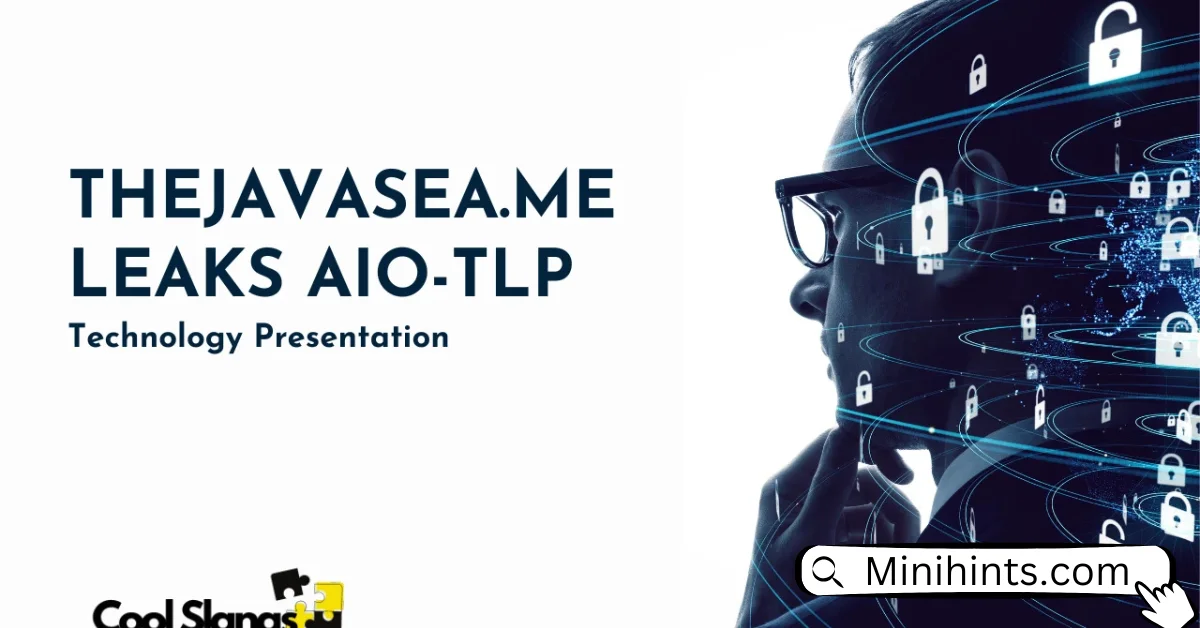Introduction
Data leaks have become increasingly common in today’s digital age, but some breaches stand out due to their scope and impact. One such incident revolves around Thejavasea.me leaks AIO-TLP data. For those unfamiliar, AIO-TLP (All-In-One Threat-Level Protection) is a framework used in cybersecurity to categorize and protect sensitive data based on threat levels. The recent leak has raised concerns among internet users and organizations alike, with privacy advocates pointing out the significant risks associated with such breaches.
This article explores what AIO-TLP encompasses, how Thejavasea.me Leaks AIO-TLP became involved in a data leak, and what steps users and businesses can take to protect themselves from similar incidents. With this guide, readers will thoroughly understand the potential risks and implications of AIO-TLP leaks and learn practical ways to bolster their own cybersecurity.
Understanding AIO-TLP: What It Is and Its Applications

AIO-TLP is a security categorization tool primarily used by cybersecurity professionals to assign threat levels to various types of sensitive data. This tool helps organizations and security teams manage and prioritize risks based on the potential threat level of the information at hand. Each threat level is designated by a color code, ranging from green (low threat) to red (high threat), to signal how urgently the data needs protection.
The primary application of AIO-TLP is to provide a standardized approach for handling and securing information based on its risk profile. This method is essential in fields like government, healthcare, finance, and large-scale tech firms, where data sensitivity is paramount. The recent breach has exposed AIO-TLP-tagged information to the public, causing serious concerns for individuals whose personal information is now more vulnerable than ever.
How the Leak Occurred: Analyzing the Sources and Mechanisms
Cybersecurity breaches often happen due to weak points in infrastructure, unauthorized access, or malicious actors exploiting system vulnerabilities. In the case of Thejavasea.me Leaks AIO-TLP, the exact cause of the AIO-TLP data leak is still under investigation. However, there are general factors that commonly contribute to such incidents, including outdated software, lack of encryption, and minimal monitoring for unusual activity.
The Thejavasea.me Leaks AIO-TLP highlights the importance of securing data at multiple levels, especially when using frameworks like AIO-TLP. When organizations fail to maintain secure databases or overlook system weaknesses, it provides an opportunity for cybercriminals to access and distribute sensitive data. Understanding these vulnerabilities is essential for both organizations and individuals who want to protect their data effectively.
Security and Privacy Implications for Users and Organizations
The leak of AIO-TLP information from Thejavasea.me Leaks AIO-TLP has far-reaching implications. For users, personal information like names, contact details, and even financial data may have been exposed. This exposure can lead to identity theft, scams, and unauthorized financial transactions, posing severe consequences for individuals.
For organizations, the impact is just as severe. Leaked data can compromise business operations, damage brand reputation, and lead to legal repercussions. Furthermore, companies may face fines for failing to comply with data protection laws if they are found to have inadequately secured customer information. The AIO-TLP framework, when compromised, also loses its reliability, making it more challenging for organizations to prioritize and protect sensitive information in the future.
Preventive Measures and Best Practices for Data Protection

For those concerned about potential data leaks, there are practical steps that both individuals and organizations can take to safeguard information. Here are some essential recommendations:
- Use Multi-Factor Authentication (MFA): Adding an extra layer of security can prevent unauthorized access, even if login credentials are compromised.
- Regularly Update Security Protocols: Security measures and software should be routinely updated to address newly discovered vulnerabilities. Ignoring updates can leave systems exposed to recent threats.
- Educate Users on Cybersecurity Basics: For organizations, providing regular training on data protection and phishing awareness can significantly reduce the risk of human error leading to breaches.
- Implement Strong Password Policies: Encouraging the use of complex passwords and regular password changes helps secure access points.
- Encrypt Sensitive Data: Encryption adds an essential layer of protection, ensuring that even if data is accessed, it remains unreadable without the correct decryption key.
By following these practices, individuals and organizations can reduce their chances of falling victim to data breaches and ensure their sensitive information is better protected.
Real-Life Case Studies on Similar Leaks
The Thejavasea.me Leaks AIO-TLP is not an isolated incident. Several high-profile data leaks in recent years demonstrate the far-reaching consequences of compromised information. For example, the 2019 Facebook data leak exposed hundreds of millions of user records, while the Equifax breach of 2017 compromised the personal information of 147 million people.
Examining these cases provides valuable insights into the preventive measures that could have been taken and highlights the critical importance of proactive cybersecurity measures. Each breach underscored the need for robust security practices and showed how neglecting cybersecurity can lead to disastrous results.
Future of Data Security: What This Leak Means for the Industry
This incident raises pressing questions about the future of data security and the role of frameworks like AIO-TLP. As cyber threats become more sophisticated, the cybersecurity industry is compelled to innovate and improve protection standards. Experts predict that future developments will focus on automation and machine learning to detect and neutralize threats in real-time, a shift that could significantly reduce the risk of leaks.
Furthermore, industries are likely to implement stricter regulations regarding data handling and require organizations to conduct regular audits. For users, this leak emphasizes the need for personal vigilance and a proactive approach to digital security. As the industry evolves, staying informed about security practices and adapting to new technologies will be essential for everyone.
Conclusion
The Thejavasea.me leaks AIO-TLP serves as a reminder of the vulnerabilities inherent in our digital systems. For individuals and organizations alike, understanding these risks and implementing preventive measures is crucial for maintaining data security. By adopting strong security practices, staying informed, and being proactive about cybersecurity, we can minimize the risks associated with data leaks and help ensure our information remains secure.




